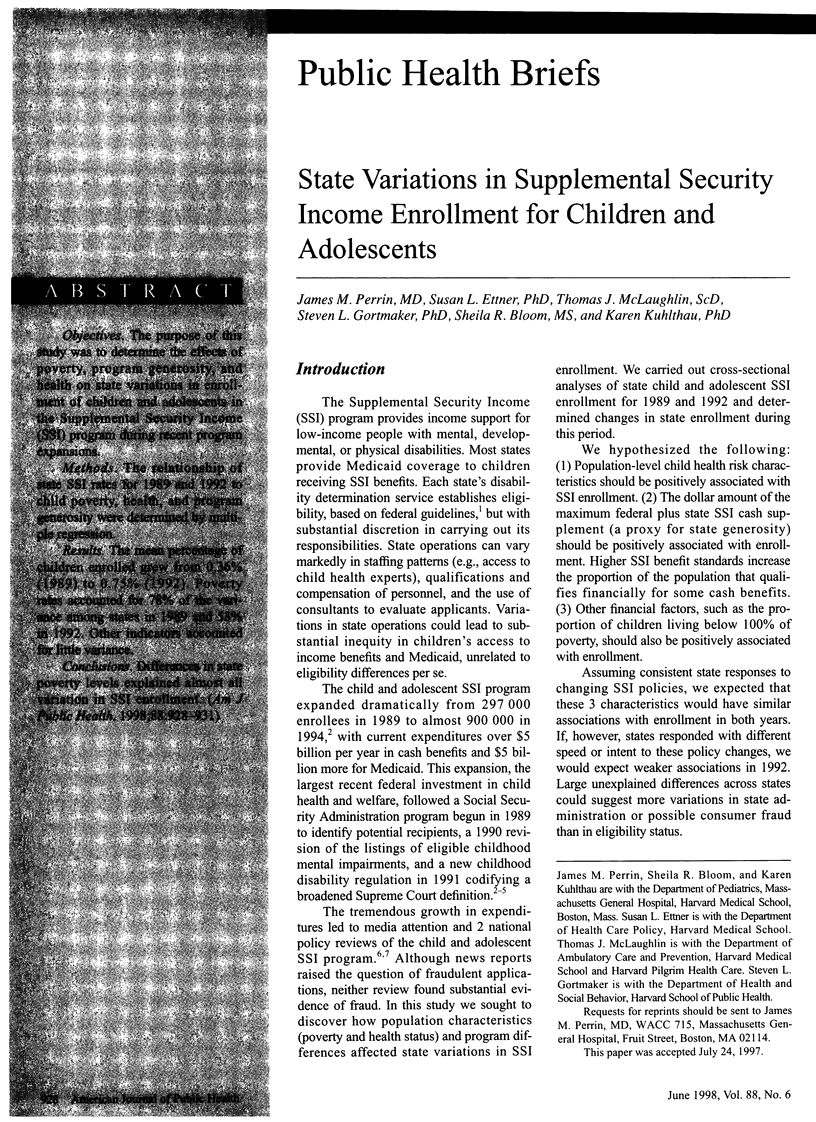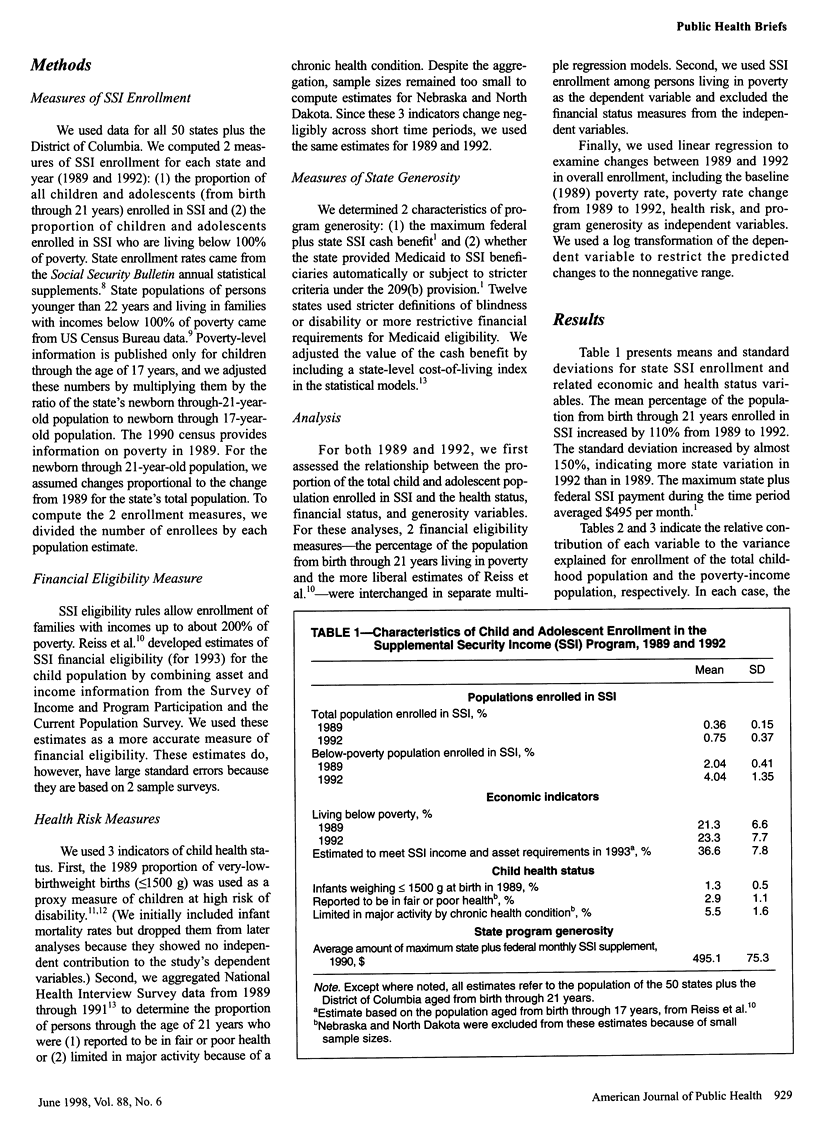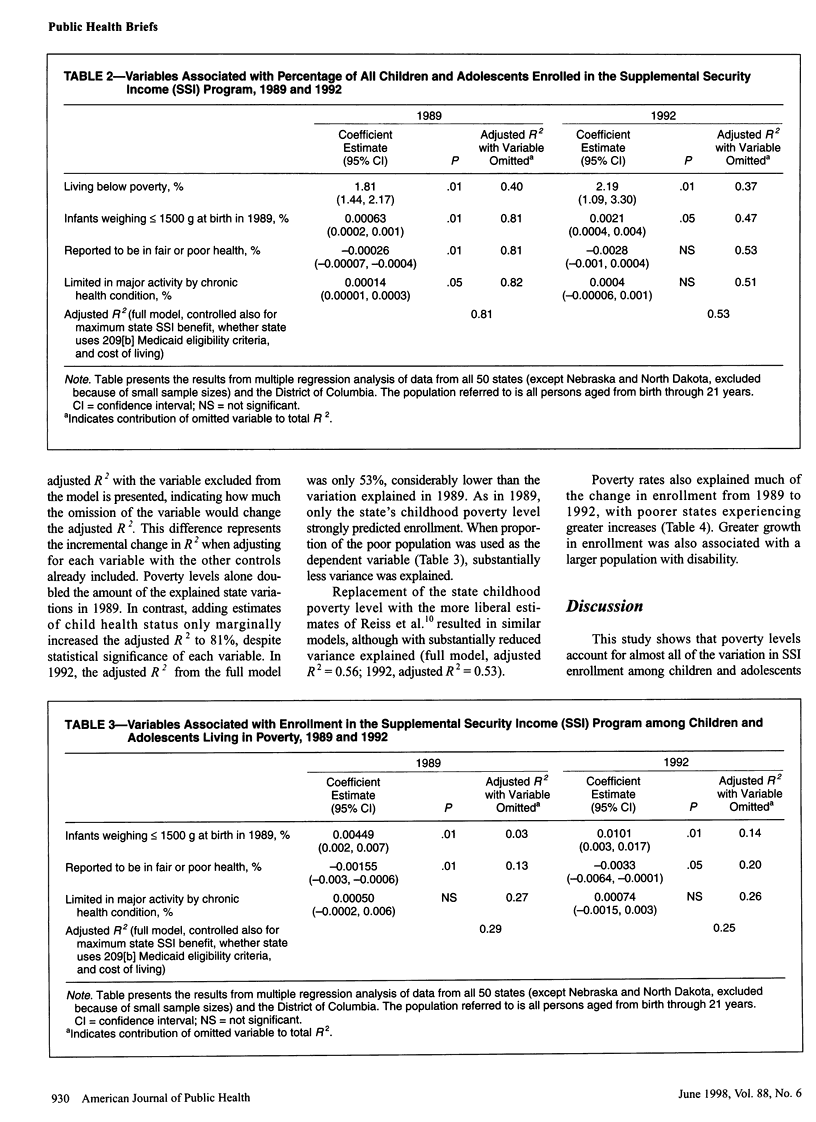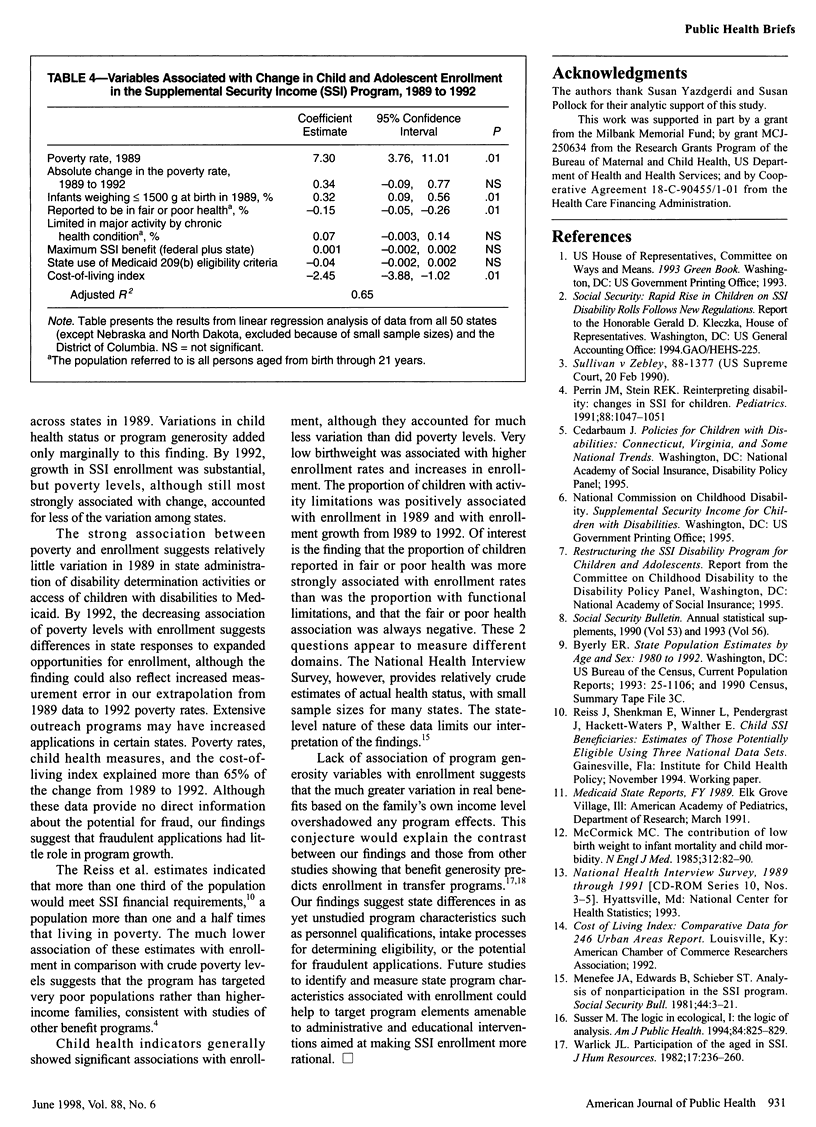Abstract
OBJECTIVES: The purpose of this study was to determine the effects of poverty, program generosity, and health on state variations in enrollment of children and adolescents in the Supplemental Security Income (SSI) program during recent program expansions. METHODS: The relationship of state SSI rates for 1989 and 1992 to child poverty, health, and program generosity were determined by multiple regression. RESULTS: The mean percentage of children enrolled grew from 0.36% (1989) to 0.75% (1992). Poverty rates accounted for 78% of the variance among states in 1989 and 53% in 1992. Other indicators accounted for little variance. CONCLUSIONS: Differences in state poverty levels explained almost all variation in SSI enrollment.
Full text
PDF



Selected References
These references are in PubMed. This may not be the complete list of references from this article.
- McCormick M. C. The contribution of low birth weight to infant mortality and childhood morbidity. N Engl J Med. 1985 Jan 10;312(2):82–90. doi: 10.1056/NEJM198501103120204. [DOI] [PubMed] [Google Scholar]
- Menefee J. A., Edwards B., Schieber S. J. Analysis of nonparticipation in the SSI program. Soc Secur Bull. 1981 Jun;44(6):3–21. [PubMed] [Google Scholar]
- Perrin J. M., Stein R. E. Reinterpreting disability: changes in supplemental security income for children. Pediatrics. 1991 Nov;88(5):1047–1051. [PubMed] [Google Scholar]
- Susser M. The logic in ecological: I. The logic of analysis. Am J Public Health. 1994 May;84(5):825–829. doi: 10.2105/ajph.84.5.825. [DOI] [PMC free article] [PubMed] [Google Scholar]


